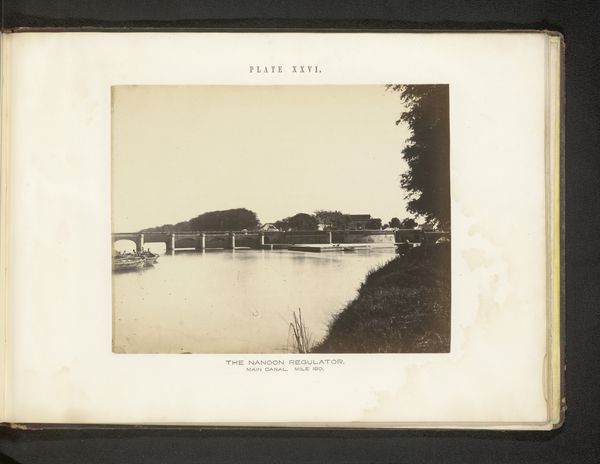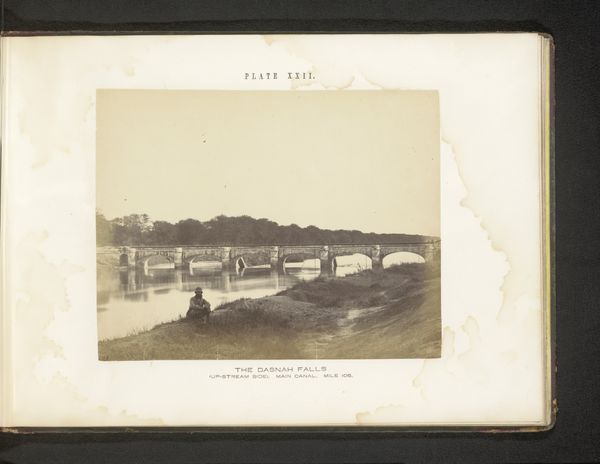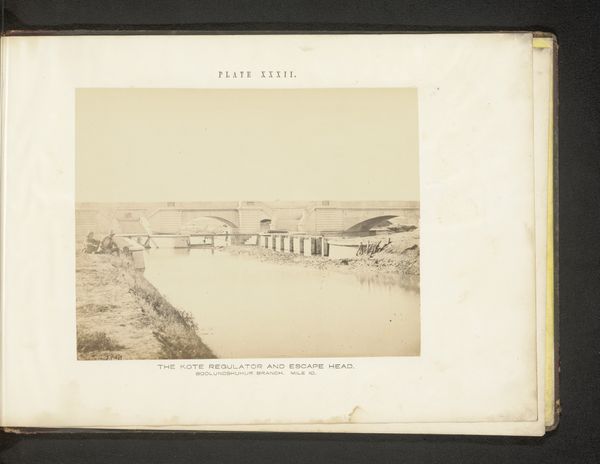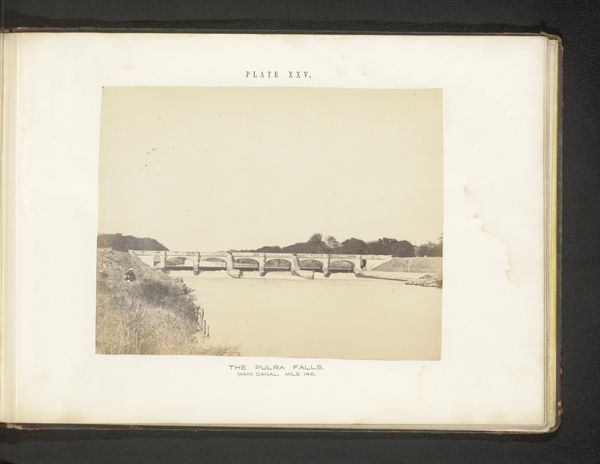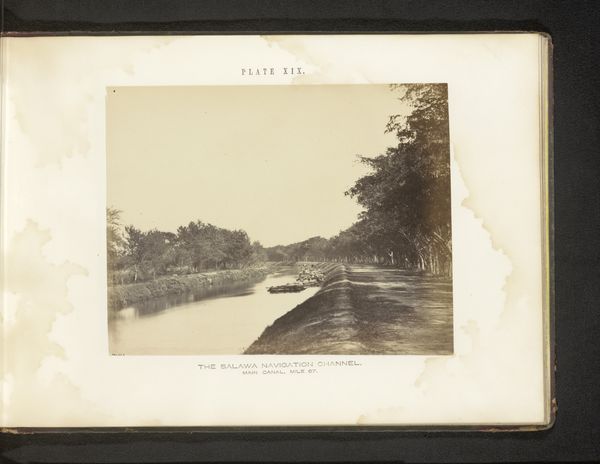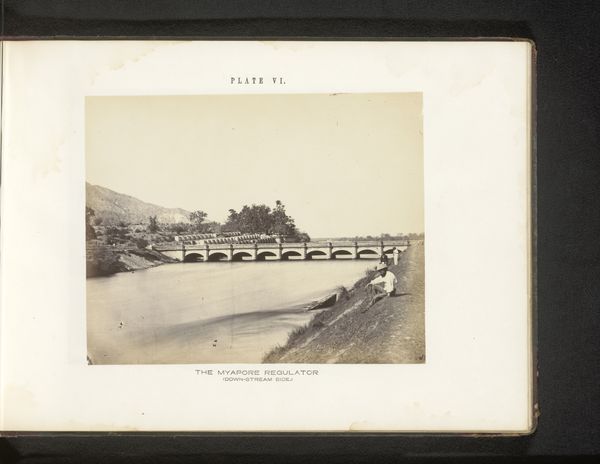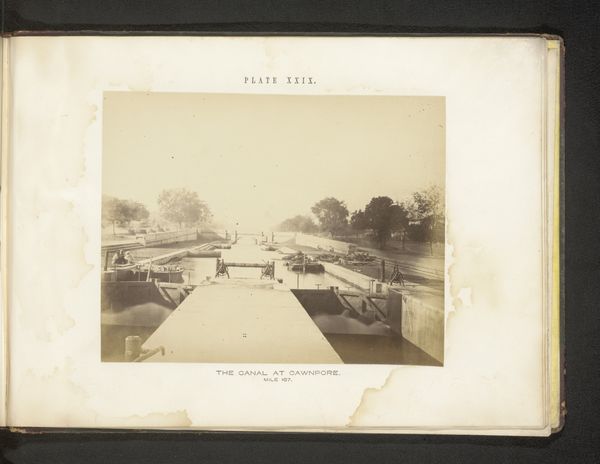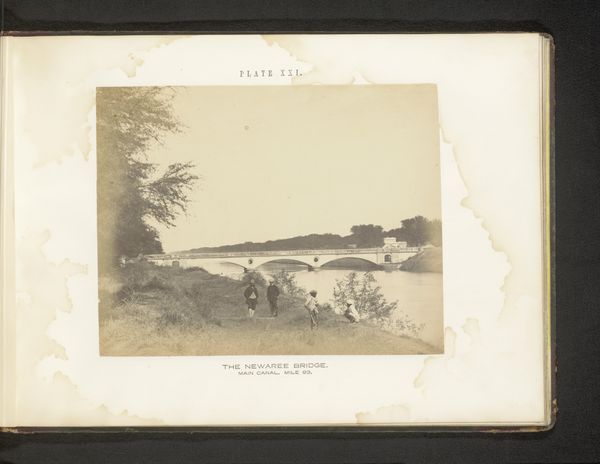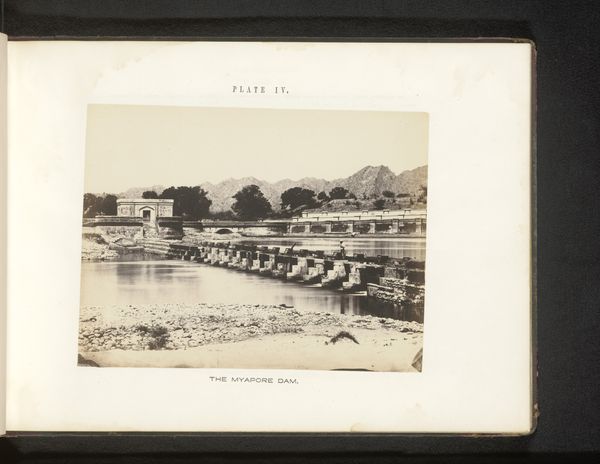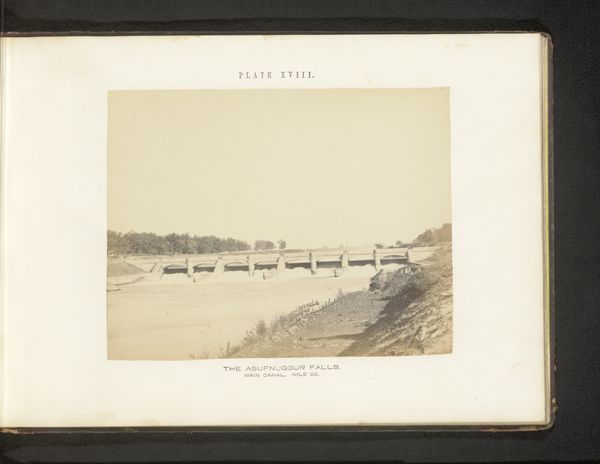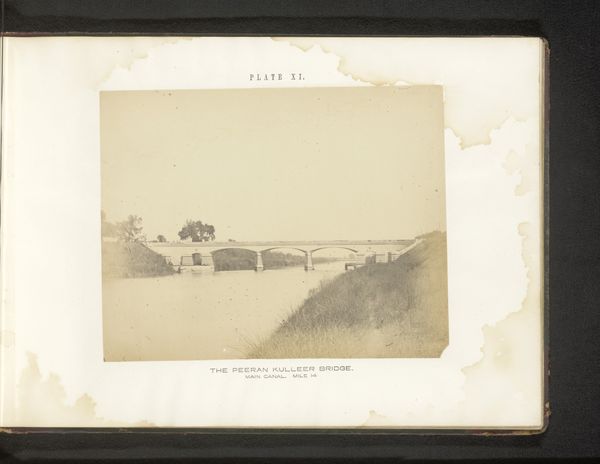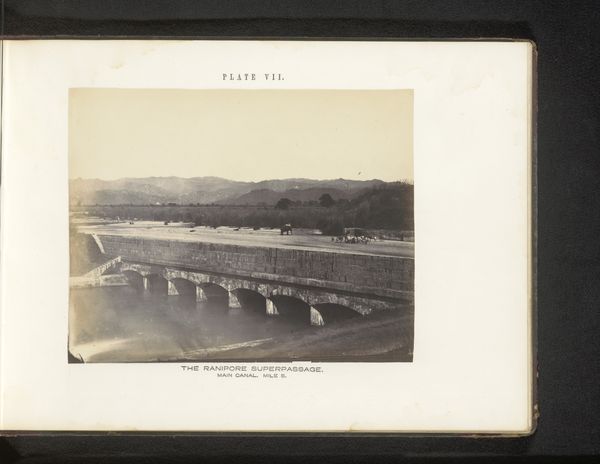
print, photography, albumen-print
#
muted colour palette
# print
#
landscape
#
river
#
photography
#
orientalism
#
albumen-print
Dimensions: height 185 mm, width 234 mm
Copyright: Rijks Museum: Open Domain
Thomas George Glover created this photograph of a bridge over the Ganges River sometime in the 19th century. It's a relatively early photograph, meaning Glover would have had to prepare his own glass-plate negatives. This was an exacting process that required both scientific knowledge and manual skill. Notice how the tonal range is limited; early photography like this could not capture a full spectrum of light and shadow. But the very fact of the photograph speaks to a broader context. The bridge was part of a railway; photography, like railways, expanded rapidly in the 19th century, enabling Westerners to document and control distant territories. What looks like a simple image is in fact a testament to technological and colonial ambition. We might even see the glass plate used to make it as a parallel to the glass windows of the train carriages, allowing for observation and control of what passes outside. By attending to the materials and the making, we can get beyond the simple image and toward the social and political forces at play.
Comments
No comments
Be the first to comment and join the conversation on the ultimate creative platform.
